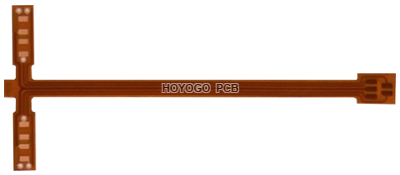Application of FPC in Medical Display Screen
With the digitalization and informatization of the medical industry, medical equipment places higher demands on display technology. Medical display screens must not only deliver high resolution and high contrast but also ensure long-term stable operation, reliable signal transmission, and a lightweight and slim design. HoYoGo, with advanced flexible circuit board manufacturing technology and strict quality control, provides high-reliability FPC products for medical display screens, strongly supporting the upgrade of medical display technology. The following will introduce the features, application advantages, and future development of FPC in medical display screens.

1. Features of FPC
FPC is a flexible circuit board made of base materials such as polyimide (PI) and polyester (PET). It offers advantages such as bendability, light weight, thin profile, and high wiring density. Compared with traditional rigid PCBs, FPC not only enables complex circuit designs within limited spaces but also withstands repeated bending and dynamic stretching, ensuring long-term reliability. These features perfectly meet the medical display screen’s need for high-performance connectors.
2. Special Requirements for Medical Display Screen Connections
Medical display screens are widely used in surgical displays, imaging diagnostics, patient monitoring, endoscopy, and portable ultrasound equipment. These devices have the following characteristics in terms of operating environment and functional requirements:
1) High Resolution and High Transmission Rate: Medical imaging often involves ultra-high-definition resolutions such as 4K and 8K, requiring extremely high data transfer speed and signal integrity.
2) Long-Term Stability: Medical equipment is frequently required to operate continuously for hours or longer, which means internal connectors must not loosen or fail easily.
3) Lightweight and Slim Design: Particularly for mobile surgical displays and portable devices, compact and lightweight designs are essential.
4) Safety and Reliability: As medical devices directly relate to patient safety, all internal components must offer exceptional reliability and durability.
3. Advantages of FPC in Medical Display Screens
1) High-Density Signal Transmission: FPC enables fine wiring and high-density interconnections, supporting high-speed, large-volume data transmission within confined spaces and ensuring crystal-clear high-resolution medical images.
2) Flexible Bending Design: The flexible routing of FPC makes it easier to achieve ultra-thin and lightweight designs, which is crucial for mobile display screens and handheld ultrasound devices.
3) High Reliability and Stability: High-quality FPCs made with advanced materials and technologies can resist electromagnetic interference and thermal expansion/contraction, ensuring stable performance even under heavy usage.
4) Easy Module Integration: FPC can be closely integrated with backlight units, touch modules, and driver circuits, enhancing the integration of medical display screens and simplifying the overall assembly process.
5) Strong Environmental Resistance: Medical environments may involve high humidity, exposure to disinfectants, or alternating high and low temperatures. FPCs possess excellent heat resistance, corrosion resistance, and flame-retardant properties, ensuring the safe operation of the equipment.
4. Application Examples
1) Surgical Display Screens: In operating rooms, doctors need high-definition real-time images to guide procedures. FPCs handle high-speed signal transmission and backlight module connections, ensuring clear and delay-free imaging.
2) Portable Ultrasound Devices: As ultrasound equipment trends toward miniaturization, FPC helps reduce overall size and weight through flexible connections, making devices easier to carry.
3) Endoscopic Display Systems: Endoscopes require circuit layouts inside extremely narrow tubes, and the flexible properties of FPC make it an ideal choice.
5. Development Trends
In the future, as medical display screens evolve toward ultra-high resolution, 3D imaging, and flexible displays, FPC technology will continue to advance. Developments such as higher-layer multilayer FPCs, lower-loss high-speed materials, and deeper integration with chip-on-film (COF) and chip-on-glass (COG) packaging will further enhance the performance and reliability of medical display screens.
HoYoGo is an international, professional, and reliable FPC manufacturer. With our extensive industry experience, advanced equipment, and professional team, we provide high-quality FPC products and comprehensive technical support for medical equipment manufacturers, helping drive innovation and development in the medical industry. If you have related needs, we welcome your inquiries.
评论
发表评论